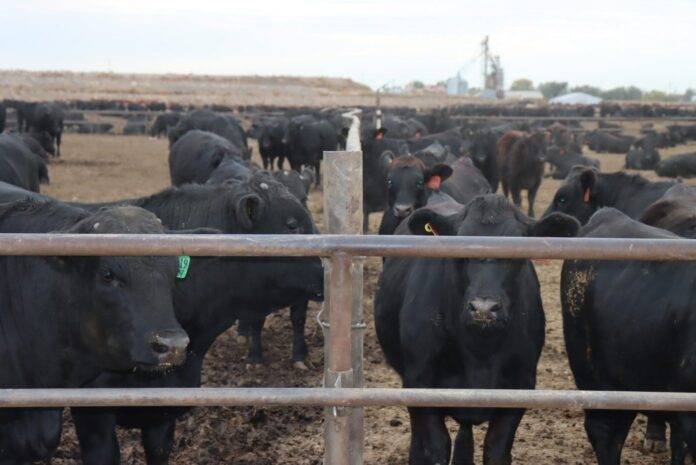The Beef Industry’s New Initiative for Dairy Calves
The Australian beef industry is on the brink of a significant transformation with the introduction of a national initiative aimed at integrating dairy calves into the red meat supply chain. This initiative, dubbed "Calfways," is spearheaded by Dairy Australia, the organization representing the dairy sector similar to Meat & Livestock Australia (MLA) for beef. The program aims to ensure that all viable dairy calves find a place in the beef supply chain, effectively doubling the utilization of dairy calves over the next decade.
Launched at the Australian Dairy Conference held on the Gold Coast, which saw attendance from around 650 industry stakeholders, Calfways represents a concerted effort to enhance the sustainability and efficiency of the dairy beef sector. Over the past 18 months, Dairy Australia has been developing this project, driven by a commitment to eliminate on-farm euthanasia of viable calves by 2035.
Dr. Andy Hancock, Dairy Australia’s Sustainable Animal Care Manager and the project lead, articulated the ambitious goals of Calfways. The initiative aims to integrate an additional 300,000 to 400,000 dairy calves into the beef supply chain, which, while significant, represents only a 7% increase relative to the annual processing of beef cattle. This increase is planned to be achieved gradually over a ten-year period, which underscores the focus on sustainable growth.
Understanding Market Dynamics
Dr. Hancock highlighted the inherent volatility in beef markets, noting an inverse relationship between calf supply and market prices. When beef prices are high, producers tend to retain their calves, while poor market conditions lead to increased processing of calves. To navigate this challenge, Dairy Australia is keen on collaborating closely with beef industry participants, including MLA and other stakeholders, to foster a seamless integration of dairy beef into the existing supply chain.
A significant hurdle for dairy farmers and calf rearers is the uncertainty surrounding market conditions, which complicates investment in necessary infrastructure. Dr. Hancock emphasized the need for developing market mechanisms that can mitigate the risks associated with capital investment in the dairy beef supply chain. This would facilitate a more stable environment for producers, encouraging them to invest in facilities and resources.
Genetic Potential and Regional Variability
The project also seeks to leverage genetic advancements in dairy beef production. Dr. Hancock pointed out that structured breeding programs focusing on specific beef genetics can produce calves meeting market specifications for slaughter, thus enhancing quality and consistency. However, the approach is not one-size-fits-all; each region in Australia presents unique challenges and opportunities. For example, Tasmania’s seasonal dairy production contrasts sharply with Queensland’s year-round calving systems, necessitating tailored solutions for each locality.
A noteworthy aspect of dairy beef production is its potential environmental benefits. Retailers have begun promoting dairy beef products as having lower carbon footprints due to reduced energy intensity in their production processes. This trend aligns with global sustainability goals and offers a competitive edge in the marketplace.
Learning from Global Practices
The Calfways initiative draws inspiration from successful models in regions such as the UK, where dairy beef production has been optimized through structured programs. For instance, UK farmers participate in a system where they receive Angus-cross calves at predetermined prices, which are then raised under agreed-upon conditions before being processed and sold. This model has proven effective, with substantial volumes of calves being processed annually, showing a clear demand for dairy beef products.
Andrew Ralph from Fulton Marketing Group echoed the sentiments of optimism surrounding the integration of dairy genetics into Australia’s beef supply chain. He highlighted the transformative impact of sexed semen technology in North America, which has led to increased awareness and adoption of dairy beef practices. Ralph is currently overseeing a pilot project that evaluates the carcass performance of high-end dairy beef animals across various feeding regimens.
The Role of Early Adopters
Early adopters of dairy beef production, like the Gardiner family from northern Victoria, have begun to see the benefits of this emerging market. By selectively breeding their Holsteins with Angus and Wagyu genetics, they have created a consistent supply of high-quality beef calves. Ann Gardiner shared insights about the challenges of managing calf welfare and market volatility, emphasizing the importance of developing trusted relationships within the supply chain.
Kevin Jones, another Victorian dairy producer, has also experienced success with Angus-cross calves, which have created a waiting list among local beef producers. His continuous supply of calves, supported by strategic breeding practices, underscores the viability of integrating dairy and beef production.
Conclusion: A Collaborative Future
The Calfways initiative represents a significant step forward for the Australian beef and dairy industries, emphasizing collaboration, sustainability, and innovation. As the project develops, it is expected to create a more integrated supply chain, benefiting all stakeholders involved—from dairy farmers to beef producers and retailers. By focusing on genetics, market mechanisms, and regional solutions, the initiative aims to establish a robust framework that not only enhances productivity but also addresses animal welfare and environmental concerns. The future of dairy beef in Australia looks promising, with a concerted effort to harness the potential of every viable calf entering the supply chain.




